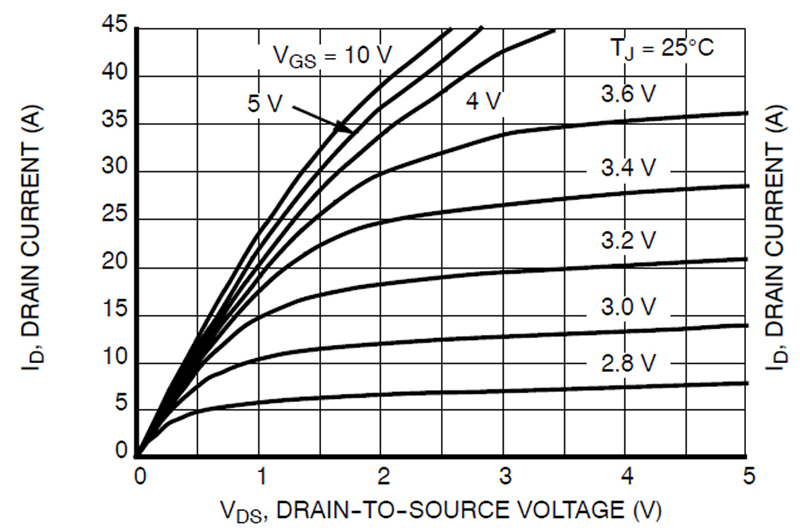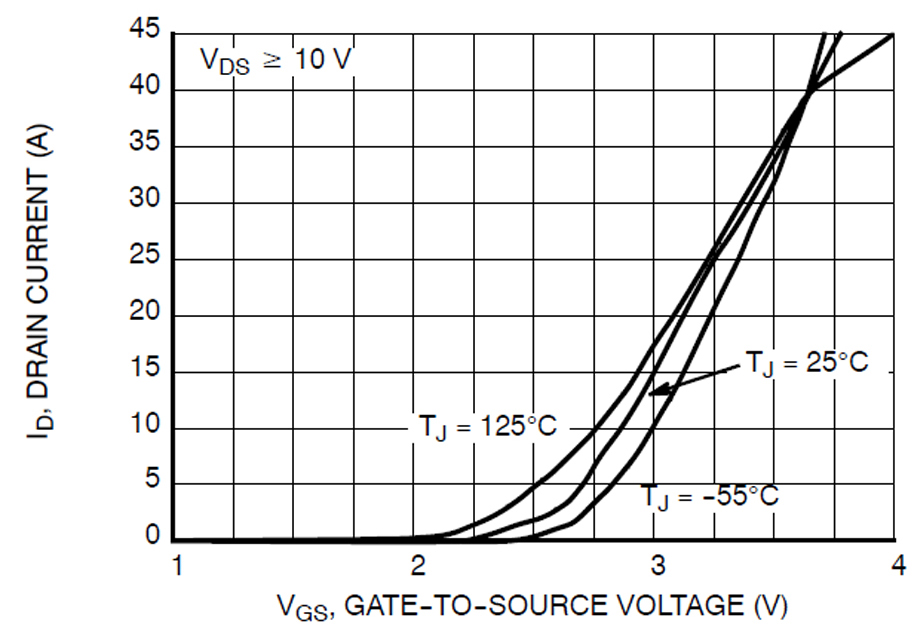Author:
Don Zaremba, Applications Engineer, MOSFET Business Unit, ON Semiconductor
Date
05/26/2011
There is a pressing need within the automotive industry for realizing greater degrees of fuel economy. This is being driven by rising oil prices through ongoing political uncertainty in many oil producing countries. There are growing difficulties in extracting remaining oil reserves and increased sales within emerging markets such as China, Russia, Brazil and India married with intensifying environment concerns. In an attempt to stem pollution levels, the US Environmental Protection Agency (EPA) has set guidelines that from 2012 onwards fleet-wide greenhouse gas emissions should be cut by 5% each year. At the same time car manufacturers still need to meet customer expectations in terms of performance, so that they can keep ahead of their competitors. This is certain to put a great deal of pressure onto manufacturers' engineering teams, and will call for more innovative solutions that can tackle these disparate demands. Maximizing the effectiveness of every drop of fuel is something that no car maker can now afford to ignore. One way that fuel efficiency can be improved is to make enhancements to the fuel delivery mechanisms being utilized. The following article will look at how the latest car models will be able to achieve this goal and describe the supporting electronics involved. Modern fuel delivery systems Modern engine designs are now starting to employ direct-injection. Here fuel is introduced straight into the cylinder rather than being premixed outside. This technique has major advantages as it allows more accurate control of the quantity of fuel used and the injection timing, leading to an increase in the vehicle's horsepower combined with a lower fuel intake. As a result of implementing direct-injection, car manufacturers will be able to meet government guidelines for reducing vehicle emission levels while still producing the high performance cars customers want. However direct-injection calls for even more sophisticated control electronics and puts exacting demands on the components being utilized. Traditionally electronic fuel injection would be carried out via a solenoid-based injector. This method has proved to be both inexpensive and highly reliable. As a result it still sees widespread use today. Unfortunately it is also relatively inefficient. There is a growing trend toward the implementation of piezoelectric injectors - with fine, rapid, multiple injections allowing the greater fuel delivery control desired, but they can prove expensive and require high voltages to activate. The car market has become increasingly competitive in recent years, with manufacturers seeing their margins tightened. Reconciling the increased cost of more advanced electronics for fuel delivery is difficult. Today's car owners will not pay more for improved performance, they expect that already. Automotive electronics has become similar to computing and portable electronics sectors in that regard - with ever increasing functionality and performance being met by lower and lower price tags. The role of power MOSFETs in modern fuel delivery systems Power MOSFETs are normally used in fuel delivery to switch the injector on/off per commands from the ECU (Engine Control Unit). One MOSFET will be employed for each injector. As fuel delivery systems have evolved, so have the MOSFET's requirements. This has meant that semiconductor companies have been forced to develop new generations of devices that have enhanced performance in a number of key metrics. 1. Operating voltage - some MOSFET parameters for direct-injection will be notably higher than for standard injection systems. Direct-injection systems generally require higher pull-in current (in order to get the solenoid operating against high cylinder pressure). This high current must happen quickly (due to limited time available to inject fuel in the engine cycle, which decreases as the RPM rises), therefore a higher voltage rail is required. Direct-injection systems can have rail voltages >100 V (as opposed to around 50 V for standard injection systems). Thus higher voltage MOSFETs need to be specified, along with voltage boost power supply circuits. Piezoelectric injectors also require high voltages to be activated, typically 200 V or above. In general, there is a lack of auto-qualified MOSFETs for high/medium voltages. As piezo applications increase, module suppliers will demand a larger selection of suppliers from which to buy the required MOSFETs. 2. Operating current - Higher currents call for lower On resistance (Rdson) devices to meet module voltage drop requirements and to reduce power dissipation in the module. Newer systems are considering trench technology (as opposed to established planar process technology) in order to reduce overall system cost. Current trench technologies can reduce active die area of a planar device with equivalent Rdson by 50%. 3. Switching speeds and repetitive UIS - The timing for an engine, even running at 10,000 RPM is not that fast in electronics terms, considering that other applications, like CPU VRM switches, run at hundreds of KHz, for example. Nevertheless increasingly complex fuel delivery algorithms are causing device switching speeds to become a more important factor. This is because the modern systems we have discussed are now injecting fuel in multiple separate bursts, instead of a single burst. The difficulty in multi-injection systems is having enough time to ramp the current again and again. If timing is not critical, the circuit designer can clamp the inductor voltage with a diode to the supply rail, thus not putting the MOSFET switch into avalanche mode at each turn-off cycle. However with increasing injections, designers often have no choice but to allow the MOSFET switch to flyback, affording maximum voltage across the solenoid inductor. This requires MOSFETs with strong UIS (Unclamped Inductive Switching) capabilities. Considering a MOSFET could see >1 billion injection cycles in a vehicle's lifetime, the repetitive UIS capability of the specified MOSFET is of great importance to system designers. As yet, however, the repetitive UIS capability of MOSFETs is not a well characterized parameter across the various vendors on the market. Efforts are now in progress to better understand reliability concerns, especially comparing new trench technologies to existing planar technologies. Trench MOSFET technology is often perceived as weak with regard to UIS capability, when compared to planar MOSFET technology. One reason for this perception is a trench device with equivalent Rdson to a planar device has significantly less active die area. For a properly designed and manufactured MOSFET, UIS capability is a function of thermal capability, so a trench device will always exhibit lower UIS capability than a planar device which is equivalently Rdson rated. The geometry of the trench structure results in a more serious concern however. In high current avalanche operation, trench technology affords hot carrier injection into the gate oxide, which can result in shifted DC parameters over multiple avalanche events. These parameter shifts can be minor, but DC parameter behavior does need to be better understood over hundred of million to billions of avalanche events. 4. Thermal considerations - Powertrain electronics are typically housed within the ECU. The ECU's ambient temperature requirements are usually the most uncompromising in the vehicle, spanning from -40 ?C to 125 ?C or above. This means that MOSFETs with higher operating temperature specifications must be designed in, capable of dealing with broader temperature ranges. To compound problems further, advances in fuel delivery systems (with new circuit topologies requiring high side switching, boost supply, and sometimes to switch down to the battery rail for hold current) have led to larger numbers of MOSFETs being incorporated into the ECU, heightening the power density. The board sizes of ECUs never increase due to the cost implications, as it would call for retooling and prevent cross-utilization of the same electronics hardware across multiple car models. This fact is driving the industry to introduce smaller, more thermally efficient MOSFET packaging. Packages have changed from TO-220, to D2PAK, to DPAK, to the newer, more compact SO8FL options. But the smaller packages, and smaller semiconductor dies drive operating temperatures up - once again leading to reliability concerns resurfacing, especially in the case of repetitive UIS (note that peak power in avalanche during an injection can be measured in kW). Any question about the reliability of a car model can lead to dire consequences. It may result in expensive recalls being carried out and have huge impact on the manufacturer's branding. As a result, sourcing power components which have the high level specifications needed is vital.

The introduction of high performance devices such as the ON Semiconductor NTD6415ANL N-channel planar based power MOSFET will allow car manufacturers to support more advanced fuel injection techniques while still assuring long term vehicle reliability and raising performance levels. This device is AEC-Q101 qualified so that it can deal with tough automotive environments. It has an Rdson of only 52 m? at 10 V and supports voltage levels of 100 V and currents of 23 A. Offered in a DPAK package its operating temperature range covers -55 ?C to +175 ?C, allowing the extreme heat levels found in direct-injection systems to be dealt with. Likewise, its thermal resistance characteristics (1.8 ?C/W junction-to-case) allow rapid heat dissipation and safeguard against faults arising. The company is also currently developing trench-based MOSFET devices to address this application area.

In summary, migration from multi-port injection to direct-injection into the cylinder will markedly improve the effectiveness of fuel delivery systems for gasoline engines. Direct-injection is far more efficient than traditional injection techniques, raising performance levels while requiring less fuel. It affords greater precision of fuel delivery, thus reducing emissions and improving fuel economy. Proliferation of direct-injection throughout the automotive industry will have a huge benefit to the long term protection of the environment. Advances in power semiconductor technologies are allowing manufacturers to simultaneously meet consumer demands for improved vehicle performance, while gaining higher fuel efficiency and lowering the impact from exhaust emissions. The new breed of MOSFETs being brought to the market by forward thinking manufacturers with specialist knowledge of the automotive sector are able to cope with the high voltages and extreme temperatures required by direct-injection systems. www.onsemi.com